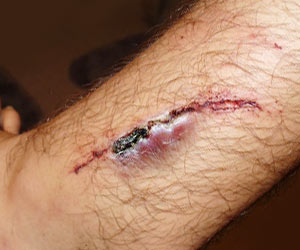Highlights
- Inflammation is a natural, protective response of our immune system in response to injury or infection.
- When the inflammatory response goes out of control as it happens during sepsis, it becomes harmful inflammation.
- Sepsis can have disastrous consequences unless effectively and promptly treated.
- Scientists have discovered a new umbilical cord factor, termed nNIF, that is found to be effective in controlling sepsis.
The Normal Inflammatory Response An inflammatory response is the immune system’s normal protective mechanism to deal with infections. The key role of inflammation is to eliminate or neutralize the cause of injury and undo some of its damaging effects.
For instance, the inflammatory response to microbial agents aims to kill them, neutralize their adverse effects and check their spread within the body.
In addition, it is also critical for repairing the tissues damaged or destroyed by bacteria.
Sepsis – Uncontrolled Inflammation Not all inflammatory responses may have a protective or positive role, and in some cases, the initial positive effect of inflammation is overshadowed by unexpected adverse results.
In severe bacterial infections referred to as sepsis the huge microbial load and their toxins in the blood stimulate the formation of enormous quantities of proinflammatory factors called cytokines. High levels of these cytokines can lead to serious consequences on the body that may be lethal. The study details about nNIF, an umbilical cord factor that inhibits one of the components of the inflammatory response, and keeps inflammation under check.
They isolated a factor in cord blood called neonatal NET inhibitory factor (nNIF) that inhibited the formation of a specific component of the inflammatory response, called NETs (neutrophil extracellular traps). NETs are believed to help the body fight infectious bacteria and viruses, but they can also cause damage to blood vessels and organs during sepsis.
Yost’s team found a similar, but less potent, anti-inflammatory agent in the placenta. The transient nature of these factors probably is due to the fact that inflammation in the delicate system of the neonate should be controlled tightly without being allowed to go out of control.
To test its efficacy, the researchers induced sepsis in mice by various mechanisms, and treated them with nNIF. They found that in untreated mice, only 20 percent survived longer than 2 to 4 days. When nNIF was administered, the mice had three times more chances of survival and 60 percent survived for longer than 2 to 4 days.
“Sepsis is a case where the body’s reaction to infection is lethal,” says Yost. “nNIF is offering insights into how to keep the inflammatory response within prescribed limits.” He adds that additional studies will have to be carried out to test the therapeutic properties of nNIF.
Neutrophil Extracellular Traps (NETs) and Inflammation Neutrophils are cells of the immune system circulating within blood vessels. They reach the sites of inflammation during the immune system’s response when the body is attacked by microbes. One of the mechanisms of neutrophil action against infectious agents is through the formation of neutrophil extracellular traps (NETs).
NETs are formed by neutrophils when they encounter various bacteria, fungi or activated platelets and a variety of other inflammatory stimuli. They are composed of a network of fibres, neutrophil DNA and anti-microbial proteins that together determine their anti-microbial properties.
The NETs trap the infectious agent, which is then killed by the neutrophil through several mechanisms. This is an instance of their protective function in inflammation.
On the flip side, NETs are also implicated in the damage of blood vessels and other tissues during sepsis, reflecting their harmful side.
nNIF acts by specifically inhibiting the formation of NETs. Possible Role for nNIF In the Neonate The cord factor nNIF is found in the baby’s blood just for two weeks after birth, and then disappears.
Scientists have tried to explain the presence of an anti-inflammatory agent that could possibly lower the defence mechanism in the neonate, whose body is already fragile. Its presence seems to go against the very principles of nature.
A possible explanation for this would be that this factor could prevent a possible inflammatory response by the baby against the mother’s proteins which could be perceived as foreign.
Also the baby, soon after its birth is exposed to a wealth of bacteria, which are critical for its subsequent development. The presence of nNIF helps the baby to tolerate these bacteria instead of mounting an immune response against them.
“The beginning of life is a delicate balance,” says Yost. “Our work is showing that it is important to have the right defenses, but they have to be controlled.”
References
- Zawrotniak M et al; Neurotrophil Extracellular Traps (NETs) - Formation and Implications; Acta Biochim Pol. 2013;60(3):277-84. Epub 2013 Jul 1.
- Introduction to Inflammation - (http://vet.uga.edu/oldvpp/programs/afvet/attachments/inflammation_notes.pdf)
- Neutrophil extracellular traps (NETs) - formation and implications. - (http://www.ncbi.nlm.nih.gov/pubmed/23819131)










